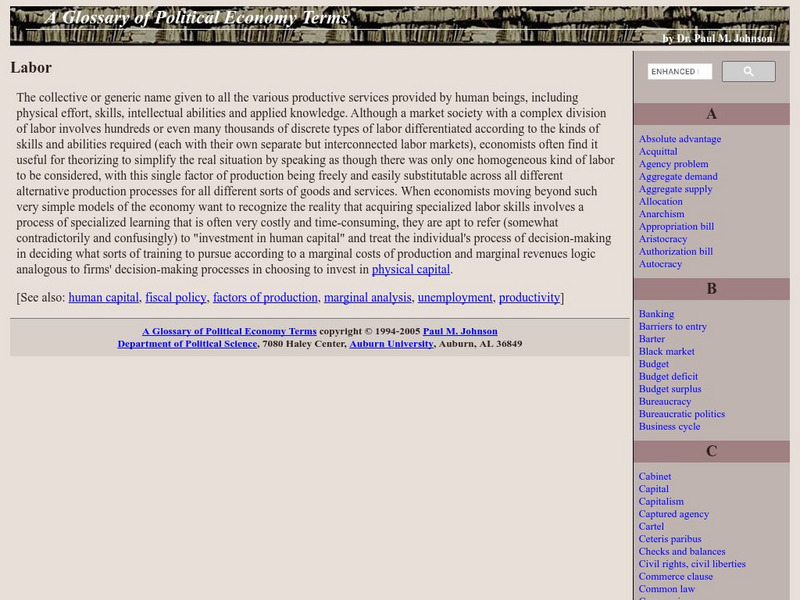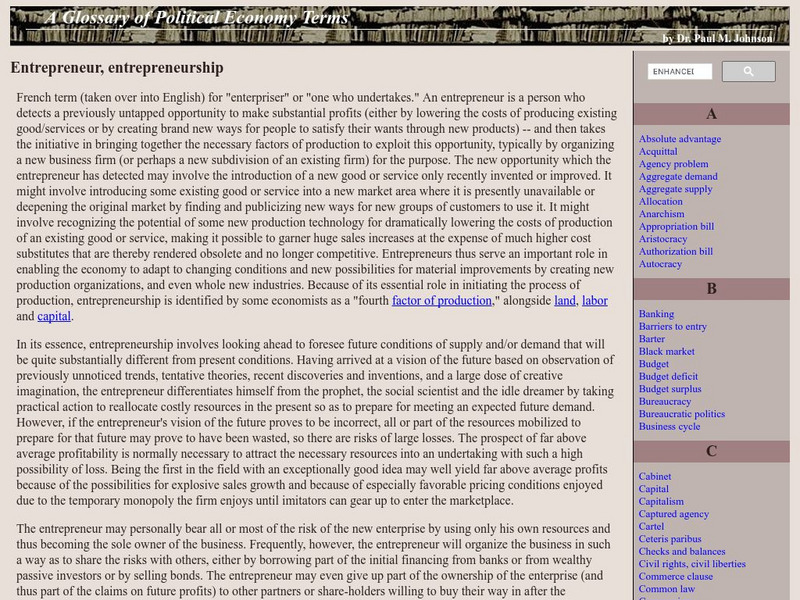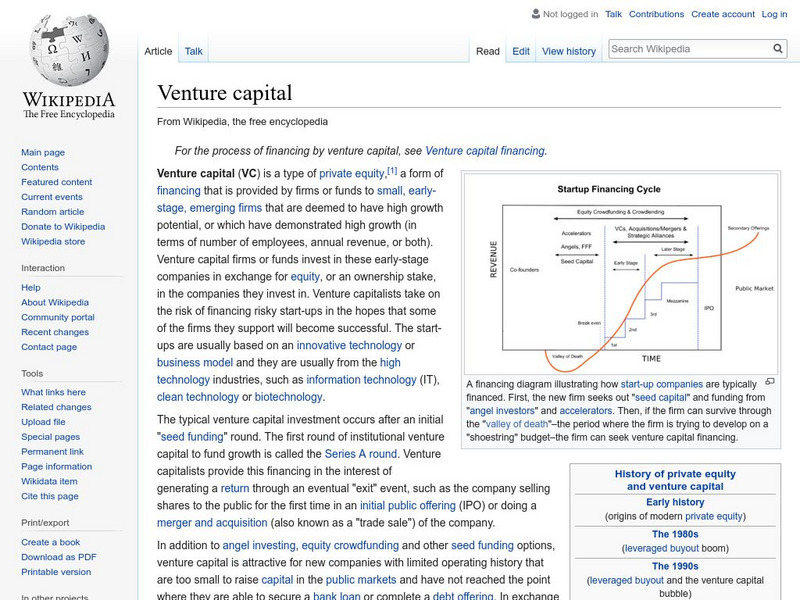Hi, what do you want to do?
Carolina K-12
Factors of Production and Economic Decision-Making
Class members begin this engaging economics activity by listing all the resources used in producing a car and using that example to draw parallels to the four primary factors of production: capital goods, labor, natural resources, and...
Federal Reserve Bank
Messy Bessey's Holidays
Teach your class some fairly complex terms—factors of production, human resources, capital resources, natural resources, and intermediate goods—with a storybook (Messy Bessey's Holidays), plenty of visuals and handouts, and related...
Carolina K-12
Practice Test of Economics
From scarcity and supply and demand to entrepreneurship and the stock market, here you'll find a multiple-choice assessment that includes 34 questions covering all the major concepts of a traditional economics course.
College Board
1999 AP® Microeconomics Free-Response Questions
Imports often affect the production of domestic goods. Scholars consider the variables in this situation with a scaffolded prompt from College Board. Other items examine factors in production and compare the production advantage between...
College Board
2004 AP® Macroeconomics Free-Response Questions Form B
A problem set explores how an international crisis could affect the economic health of Canada using authentic materials from College Board. Other questions ask learners to create and evaluate supply and demand curves and examine factors...
College Board
2015 AP® Macroeconomics Free-Response Questions
Currency exchange is a big factor in governments making economic decisions. Scholars consider various scenarios to evaluate how factors such as interest rates and private investments would affect a nation's economy using a practice test...
College Board
2016 AP® Macroeconomics Free-Response Questions
The debate of cupcake versus donuts may seem like a superficial one. However, learners consider whether it makes sense to specialize in producing only one confectionery in a scaffolded problem involving complicated economic concepts....
College Board
2001 AP® Macroeconomics Free-Response Questions
The European Union has had a profound effect on world economic dynamics. A structured inquiry investigates its impacts on global interest rates. Other authentic testing materials from College Board explore banking reserve requirements...
Council for Economic Education
China - Where Will They Fit in the World Economy?
Teach scholars why China is so crucial to global economics through an informative resource. Activities include using databases to search for information, watching a video or listening to a podcast, and reading about China's economy as a...
Sharp School
Real Life Economics 101
Your learners will take key economic concepts, such as identifying needs versus wants and the four factors of production, and design a video to explain their topic choice to the class. Rather than have one person in charge of dispensing...
Curated OER
Economics Study Guide
Use this resource as a basic review of economic principles. There are six questions relating to the factors of production, opportunity costs, wants and needs, tangibles and intangibles, and more.
Curated OER
The Circular Flow of Resources, Goods, Services, and Money Payments
In this Circular Flow of Resources, Goods, Services, and Money Payments worksheet, students read background information, examine a flow chart, then answer ten questions.
Curated OER
Factors of Production
Middle schoolers identify and define the four factors of production on a diagram. Using a product they use everyday, they write down which natural resources are used to make the product and what type of skills the workers needed to make...
Auburn University
Auburn University: Labor Productivity
This site explains the concept of labor within the free enterprise system. It is a good introduction to connecting labor and productivity. The list of hyperlinks is also a good continuation of related topics.
Auburn University
Auburn University: Glossary of Political Economy: Entrepreneur, Entrepreneurship
Provides a definitive overview of entrepreneur and entrepreneurship from the point of view of an economist.
Auburn University
Auburn University: A Glossary of Political Economy Terms: Derived Demand
Definition and examples of derived demand are provided.
Wikimedia
Wikipedia: Venture Capital
This site gives a description of venture capital. Includes links to words that need further clarification.
Other
Sukromne Gymnazium: The Study of Economics [Pdf]
An introduction to basic concepts in beginning economics.
Other
Factors of Production Activities
This site provides an activity and discussion that could be used when studying the factors of production.
Council for Economic Education
Econ Ed Link: Clipping Coupons
Explore this website to find out how and why consumers make choices on what products to buy. Learn how producers entice consumers into buying their products. This is a very informative lesson plan.
Council for Economic Education
Econ Ed Link: Music, Maestro, Please: Show Business and the Factors of Production
The city of Philadelphia, Pennsylvania recently opened a $300 million dollar center for the performing arts, the Kimmel Center. This lesson was developed for a special teacher workshop to incorporate economics and the arts to teach kids...
Council for Economic Education
Econ Ed Link: The Price of Gasoline: What's Behind It?
In this lesson, students investigate the variables that contribute to the cost of gasoline. They learn that while OPEC nations do influence the price of oil and thus the price of gasoline, other factors also influence the price.
Council for Economic Education
Econ Ed Link: Increasing Productivity
This lesson stimulates learners' thinking with stories about rigorous athlete training illustrating the importance of training and practice. After students read the story, they will experiment to see how instruction and practice improves...
Council for Economic Education
Econ Ed Link: Those Golden Jeans
Check out this informative economics lesson plan designed to review the three productive resources--natural resources, human resources, and capital resources--needed to produce goods and services.






















![Sukromne Gymnazium: The Study of Economics [Pdf] Handout Sukromne Gymnazium: The Study of Economics [Pdf] Handout](https://static.lp.lexp.cloud/images/attachment_defaults/resource/large/FPO-knovation.png)

